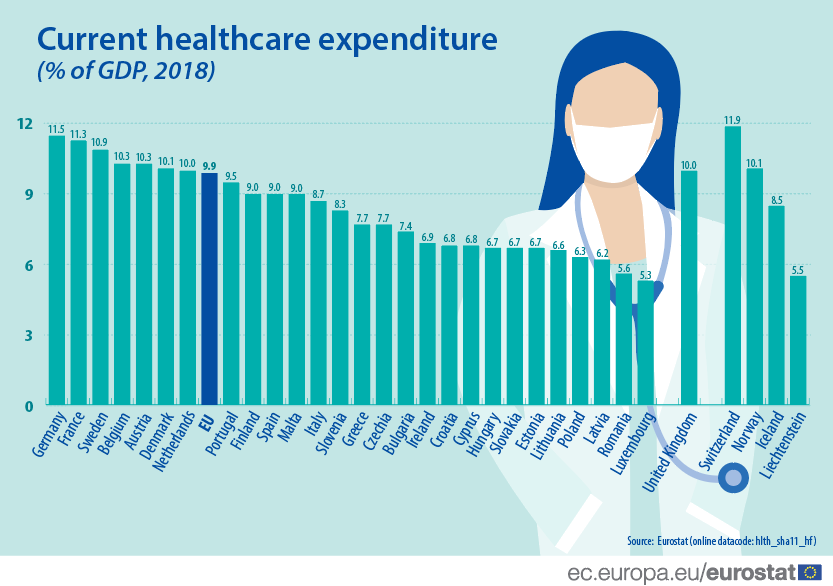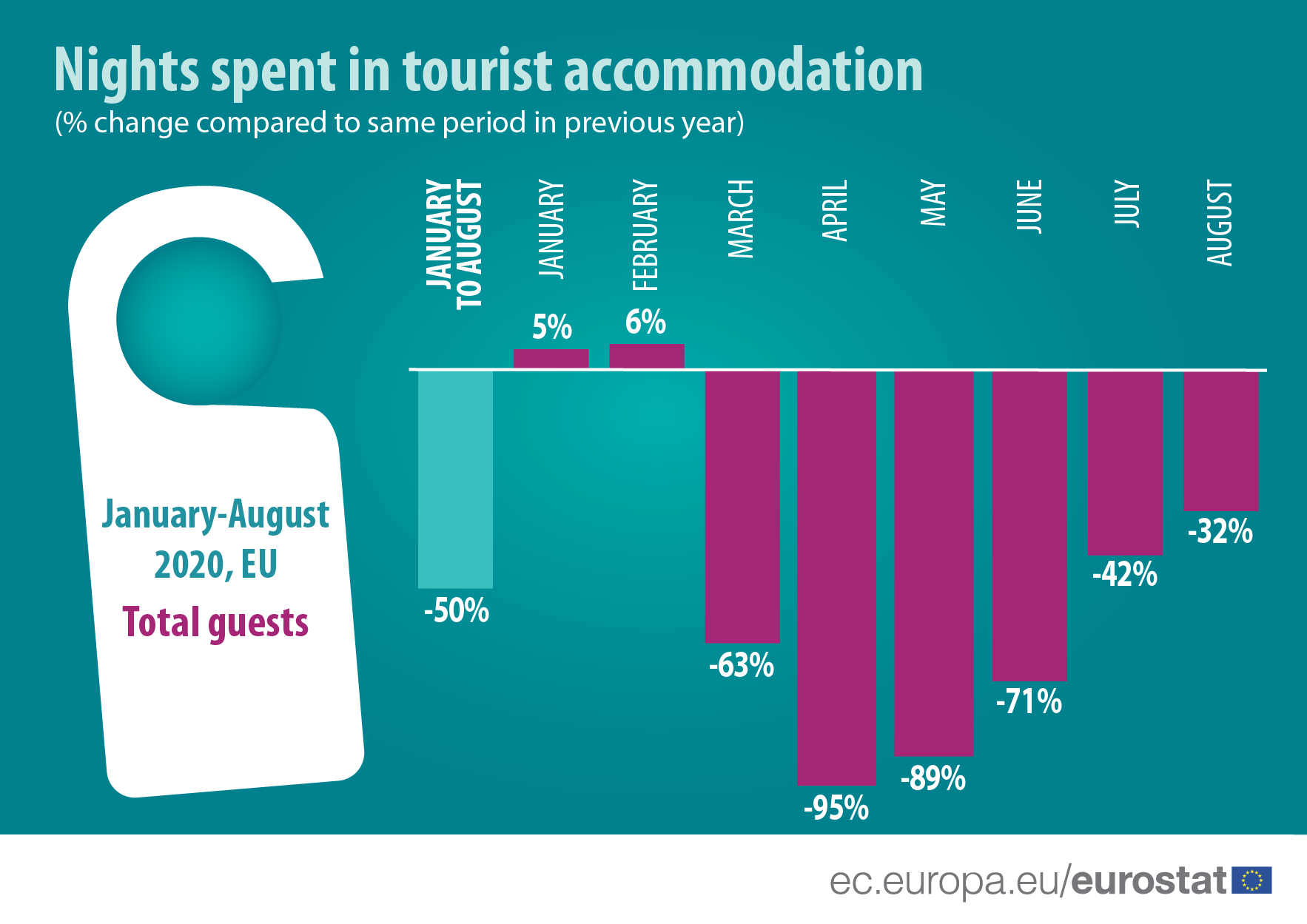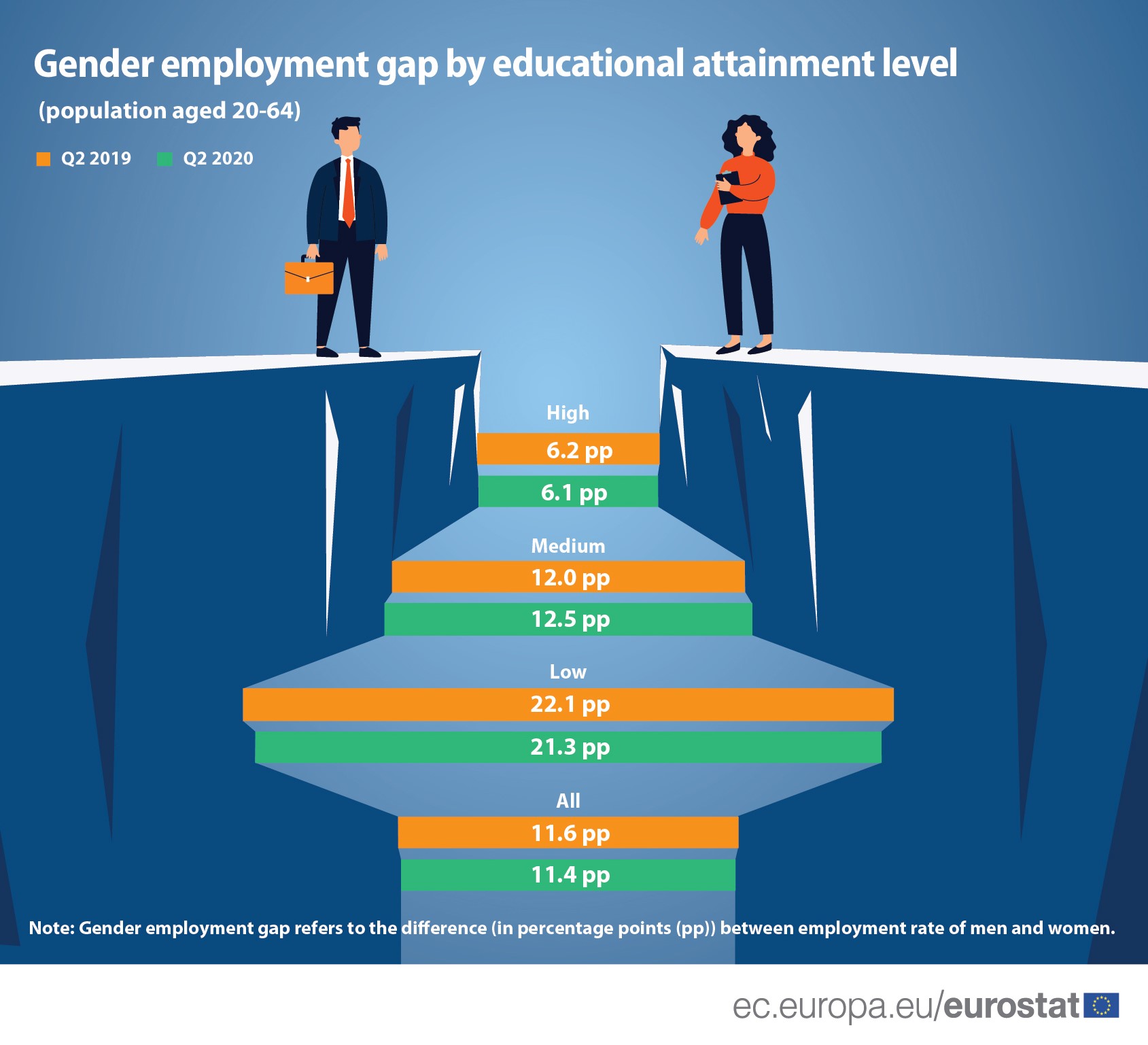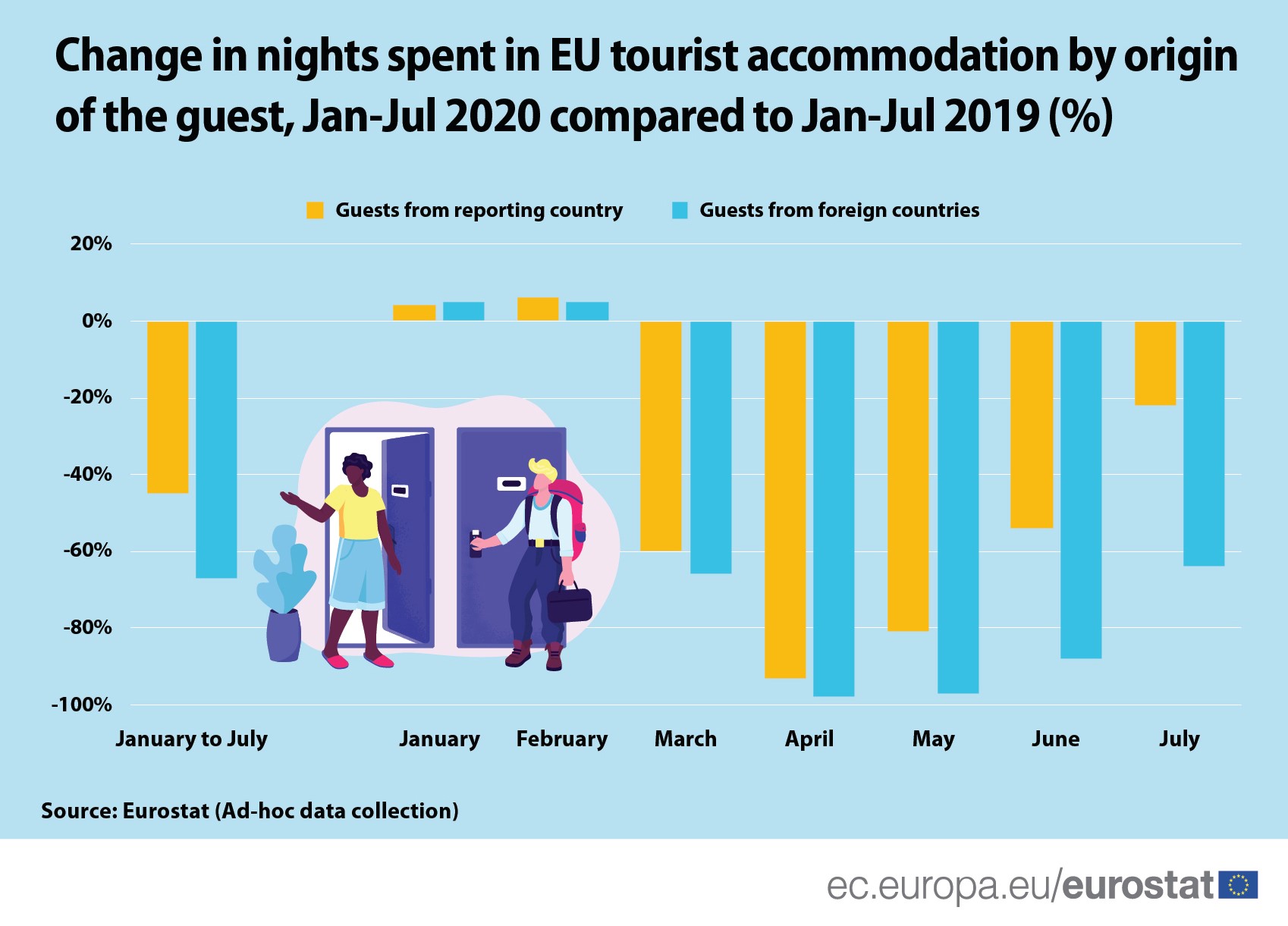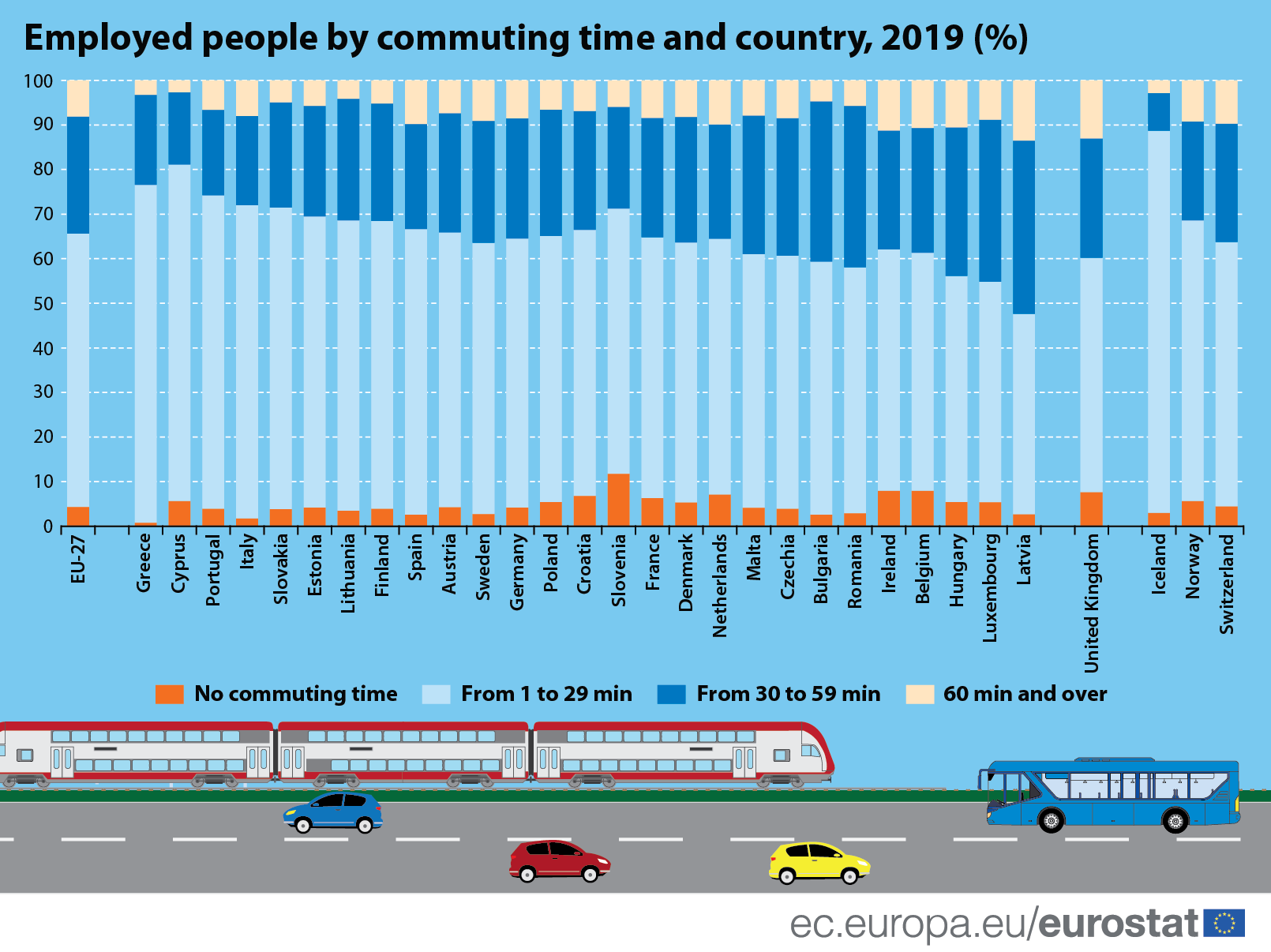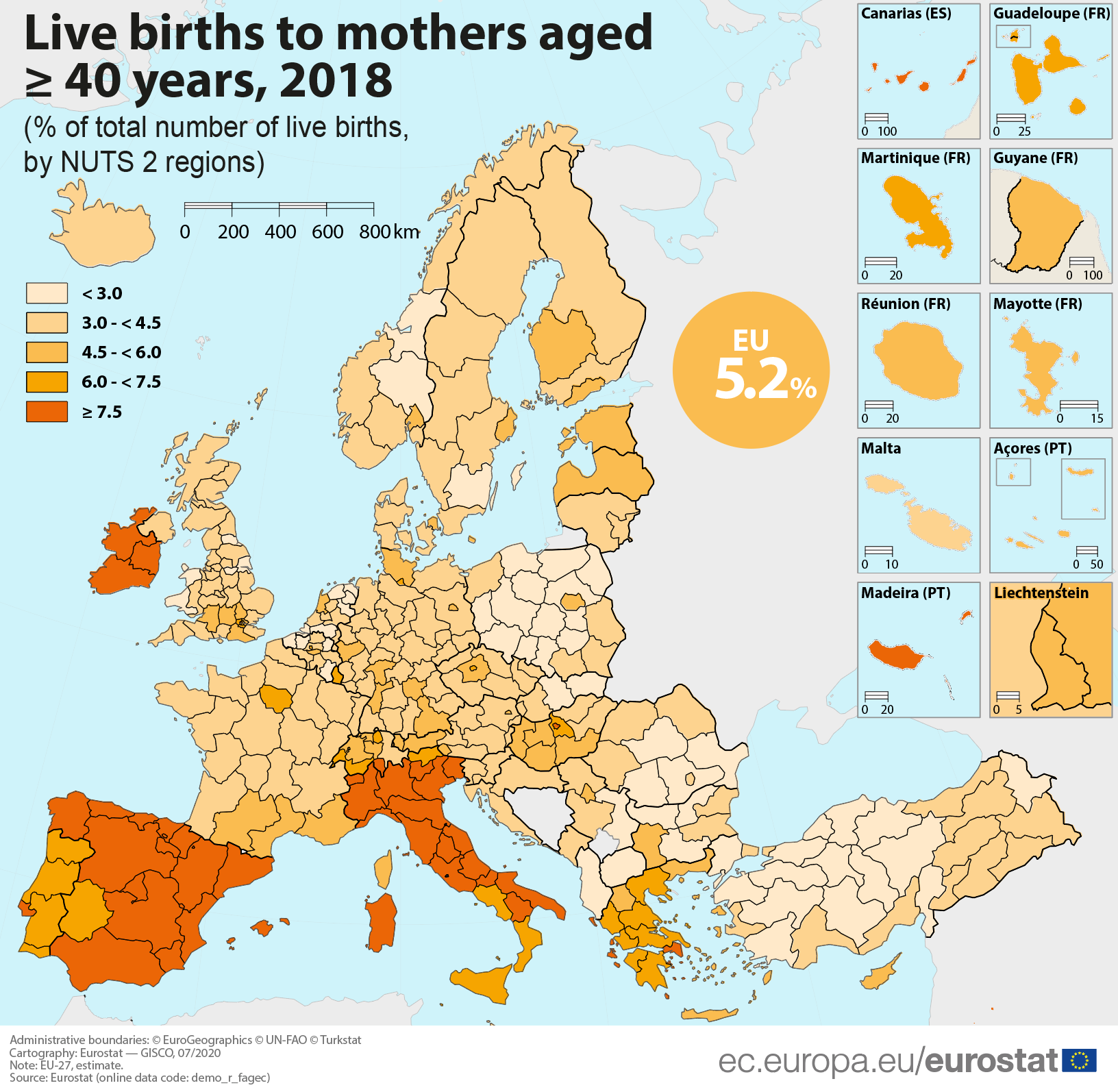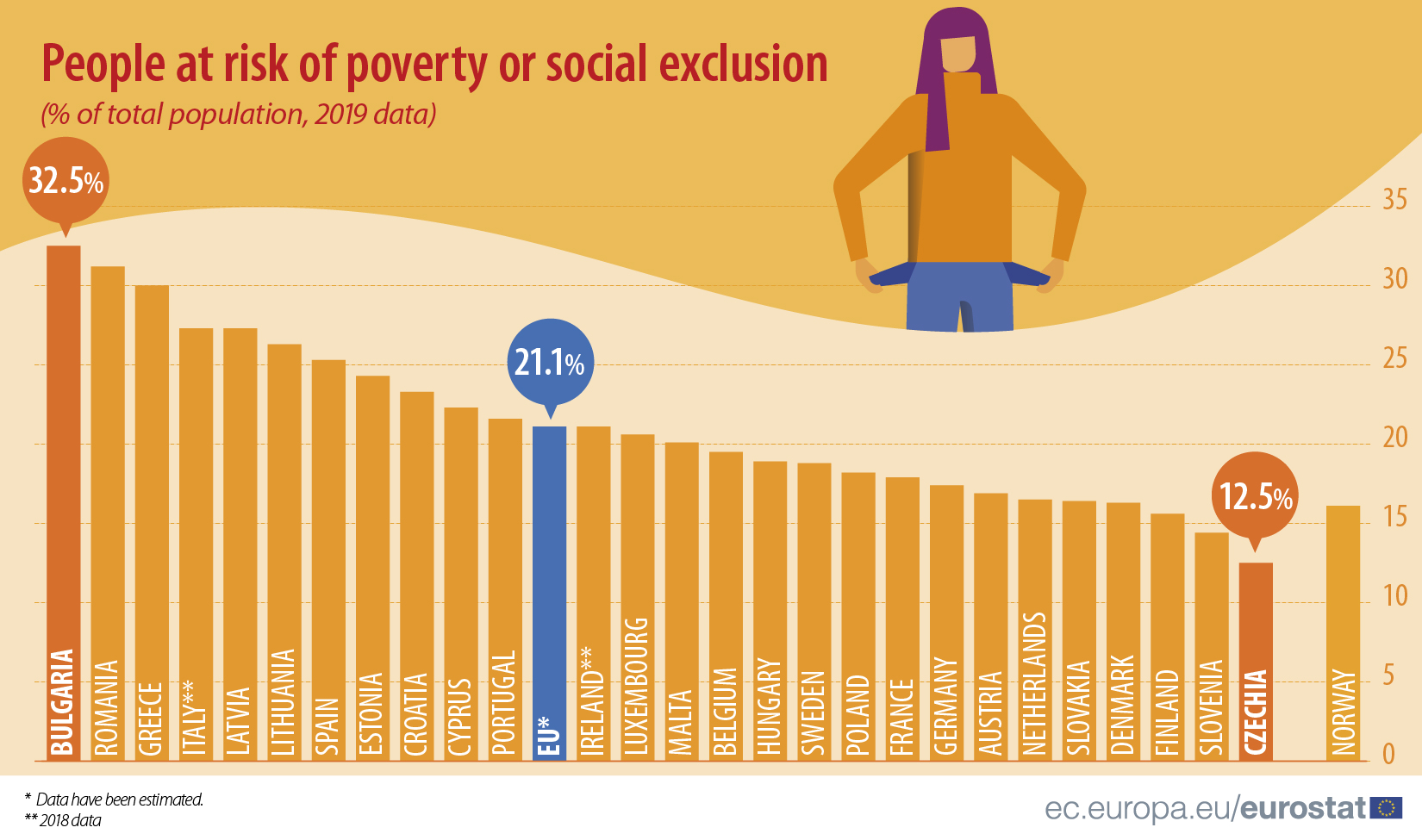In these times of COVID-19, it is interesting to know how much is being spent on healthcare.
Statistics
In 2020, the tourism industry has suffered from the COVID-19 outbreak.
The “Health at a Glance: Europe 2020” Report provides a first look at comparative data on how European countries have experienced and responded to the pandemic, including both outcomes and policies
In the second quarter of 2020, the EU employment rate (for people aged 20-64) was 66% for women and 77% for men.
During the early part of 2020 the tourism industry suffered as a result of travel restrictions implemented in response to the Covid-19 pandemic.
In 2019 more than half (61.3%) of employed people in the EU travelled less than 30 minutes from home to work, i.e. commuted one-way and without any detours.
In 2018 there were 4.25 million live births across the EU.
In 2020, among the 26 EU Member States for which data are available, there were 168.000 more deaths during weeks 10-26 (March – June) than the average number of deaths during the same period over t
In 2019, 21.1% of the population in the European Union (EU), equivalent to 92.4 million people, were at risk of poverty or social exclusion, slightly down from 2018 (21.6%).
To prevent the spread of the COVID-19 pandemic, countries around the world have taken a variety of restrictive measures.
